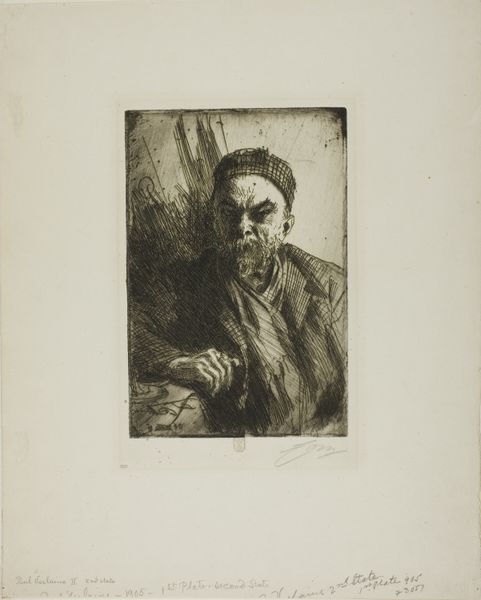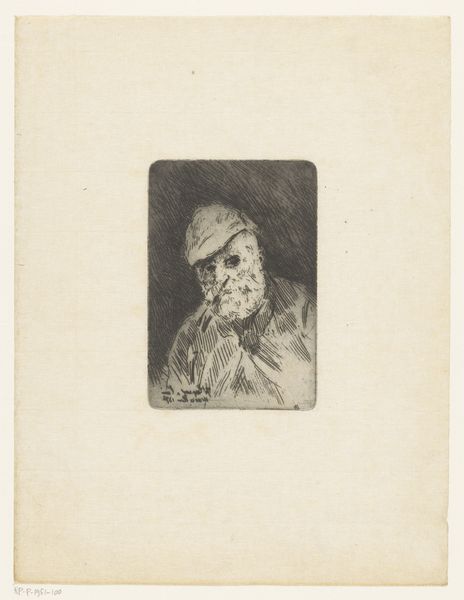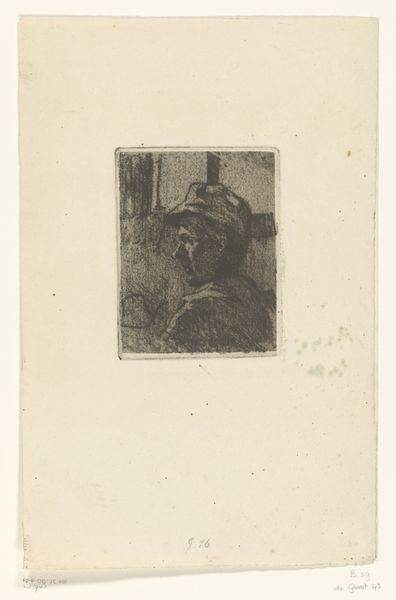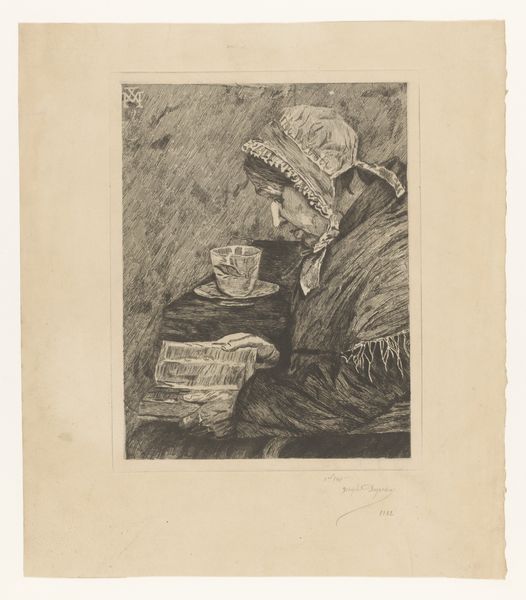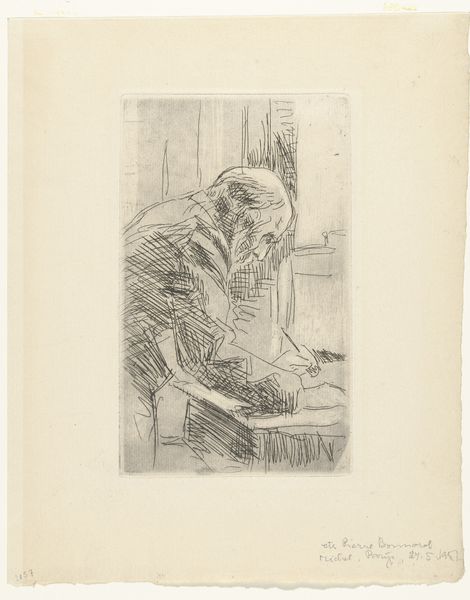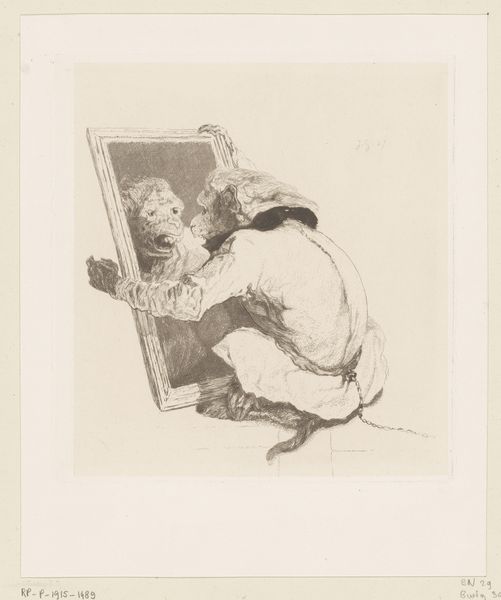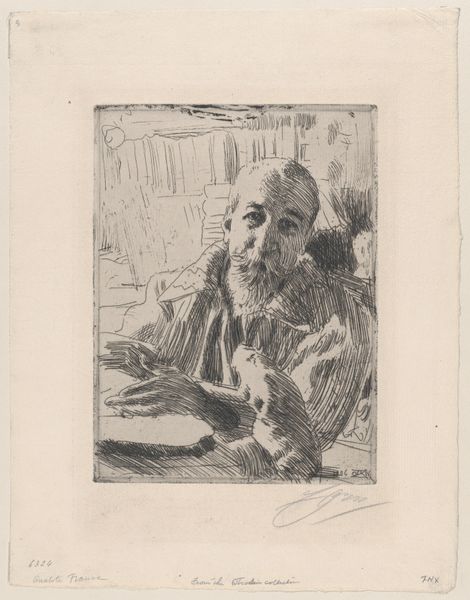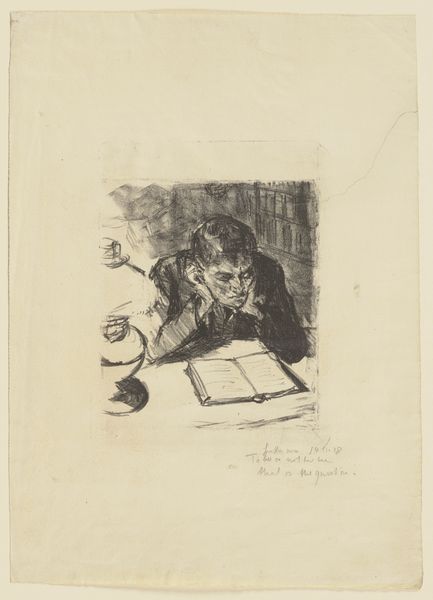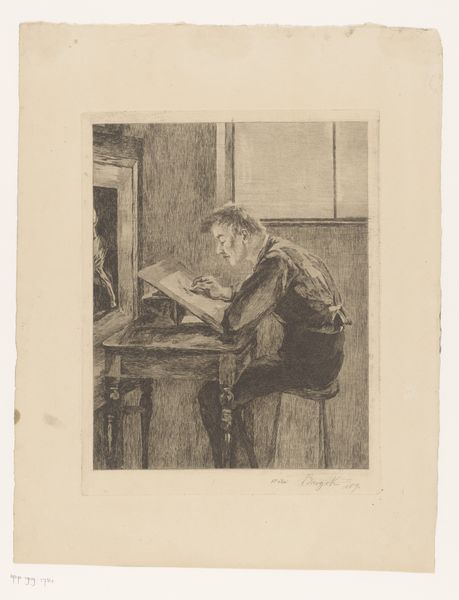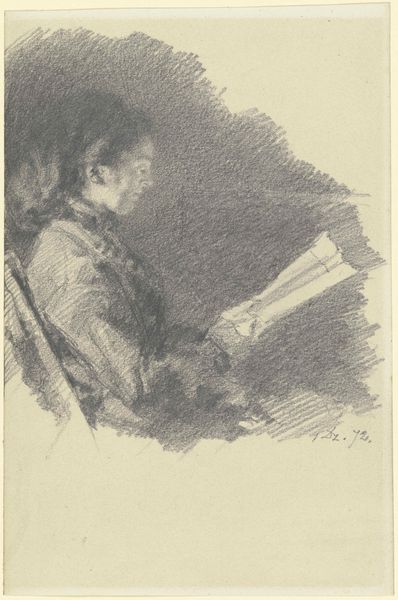
drawing, print, etching, intaglio, paper
#
portrait
#
drawing
#
self-portrait
# print
#
etching
#
intaglio
#
etching
#
paper
Dimensions: 268 × 189 mm (image); 276 × 197 mm (plate); 400 × 300 mm (sheet)
Copyright: Public Domain
Curator: Here we have Anders Zorn's 1897 etching, "Carl Larsson," now part of the collection here at the Art Institute of Chicago. Editor: My first thought is the starkness of the lines, creating an intimate but somewhat melancholic mood. Curator: The somber tone seems particularly resonant given the debates surrounding Swedish national identity and artistic movements at the turn of the century. We see here a negotiation of masculinity amidst shifting social dynamics. Editor: Indeed. Zorn, capturing Larsson mid-creation, evokes not only artistic power, but also that charged symbol of the creative process, hinting at themes that resonate across time. I’m particularly struck by the way light and shadow play on Larsson’s face. The details like his beard becoming heavy with dark markings draw my eye in closer to consider the emotional implications. Curator: Absolutely, and when viewing this portrait we must remember Sweden's place at the periphery of broader European movements and ask, to what extent did such external power dynamics inform artistic self-fashioning, especially for men in the Nordic region? This introspection is something visible across different media throughout Zorn's body of work. Editor: This etching technique further enriches my reading, given the labor-intensive process which infuses the end result with visible mark of process. Do you think that knowing its handmade informs how this piece should be perceived historically within its artistic circles? Curator: The performative nature of artistic identity, reflected in the etching's delicate, but decisive strokes, becomes a meditation on what it means to embody artistry itself, beyond mere representation. Editor: The marks really hold an almost spiritual quality—almost reverential for their subject matter or technique—and it definitely influences how one feels. Thanks, this context helps a lot to focus on his intentionality and its reflection of inner conflict within this moment depicted nearly a century past now. Curator: Examining the socio-political currents embedded in portraiture encourages broader dialogue, particularly pertinent now. It’s all these facets interplaying, isn't it?
Comments
No comments
Be the first to comment and join the conversation on the ultimate creative platform.
